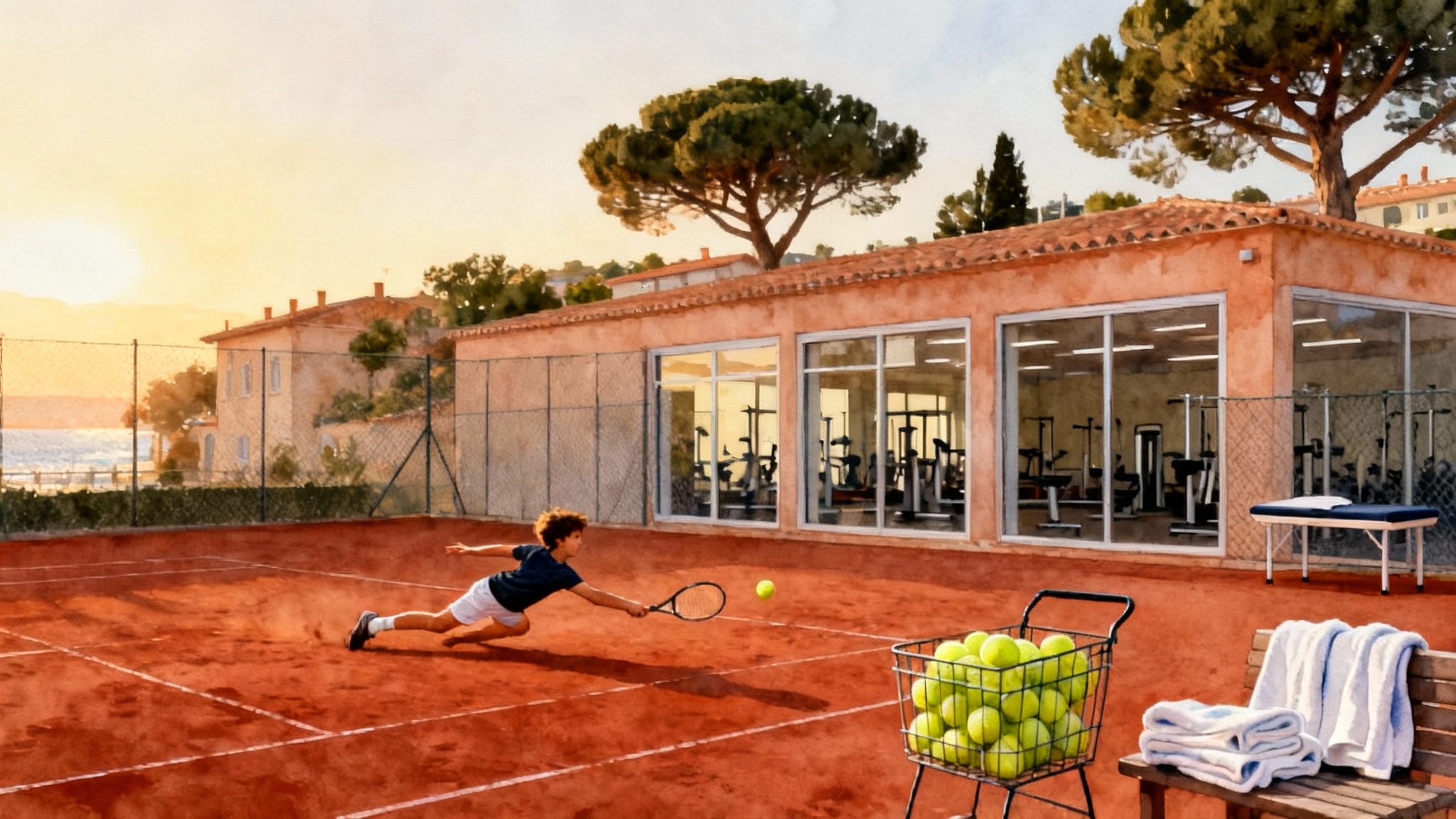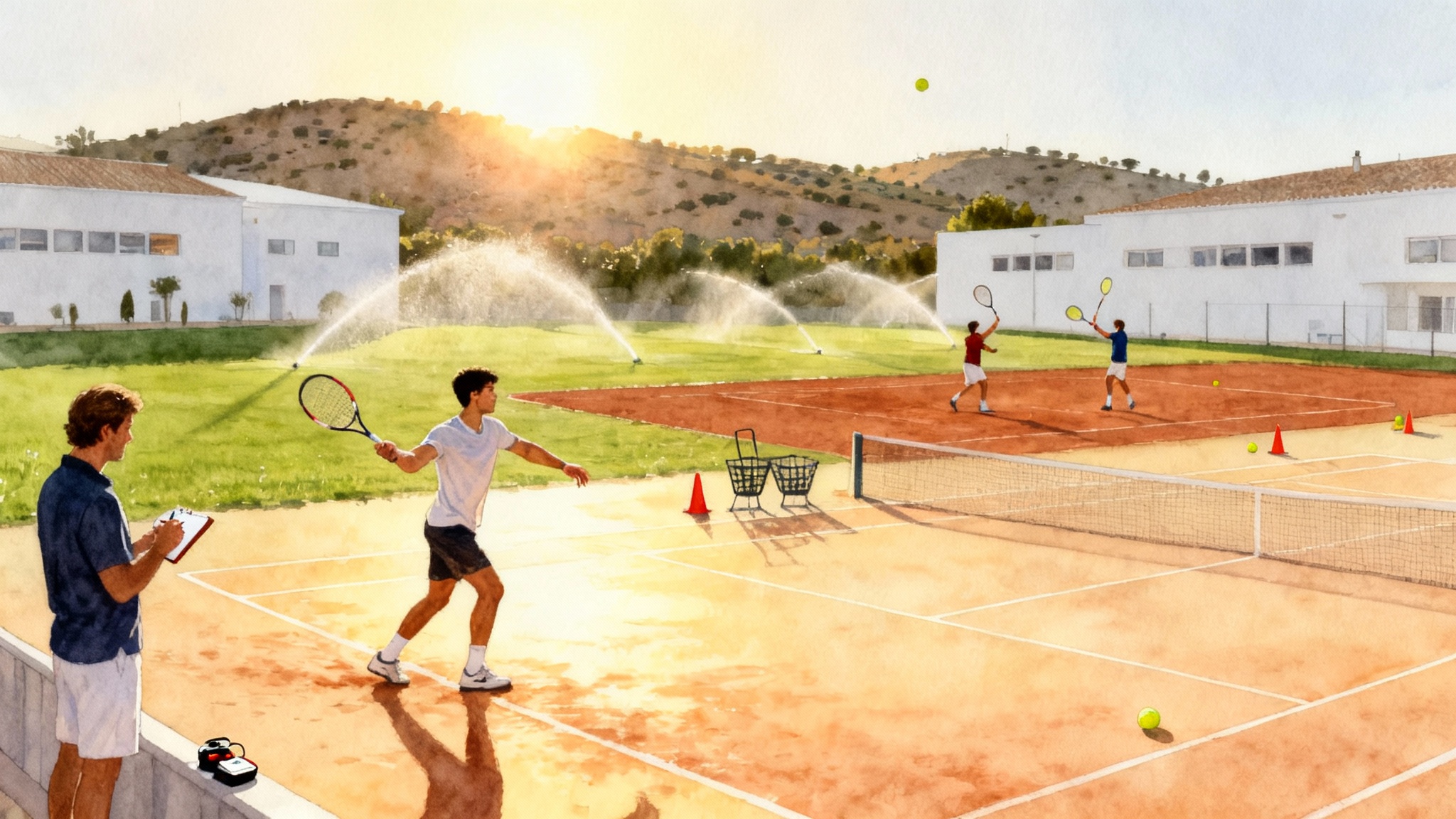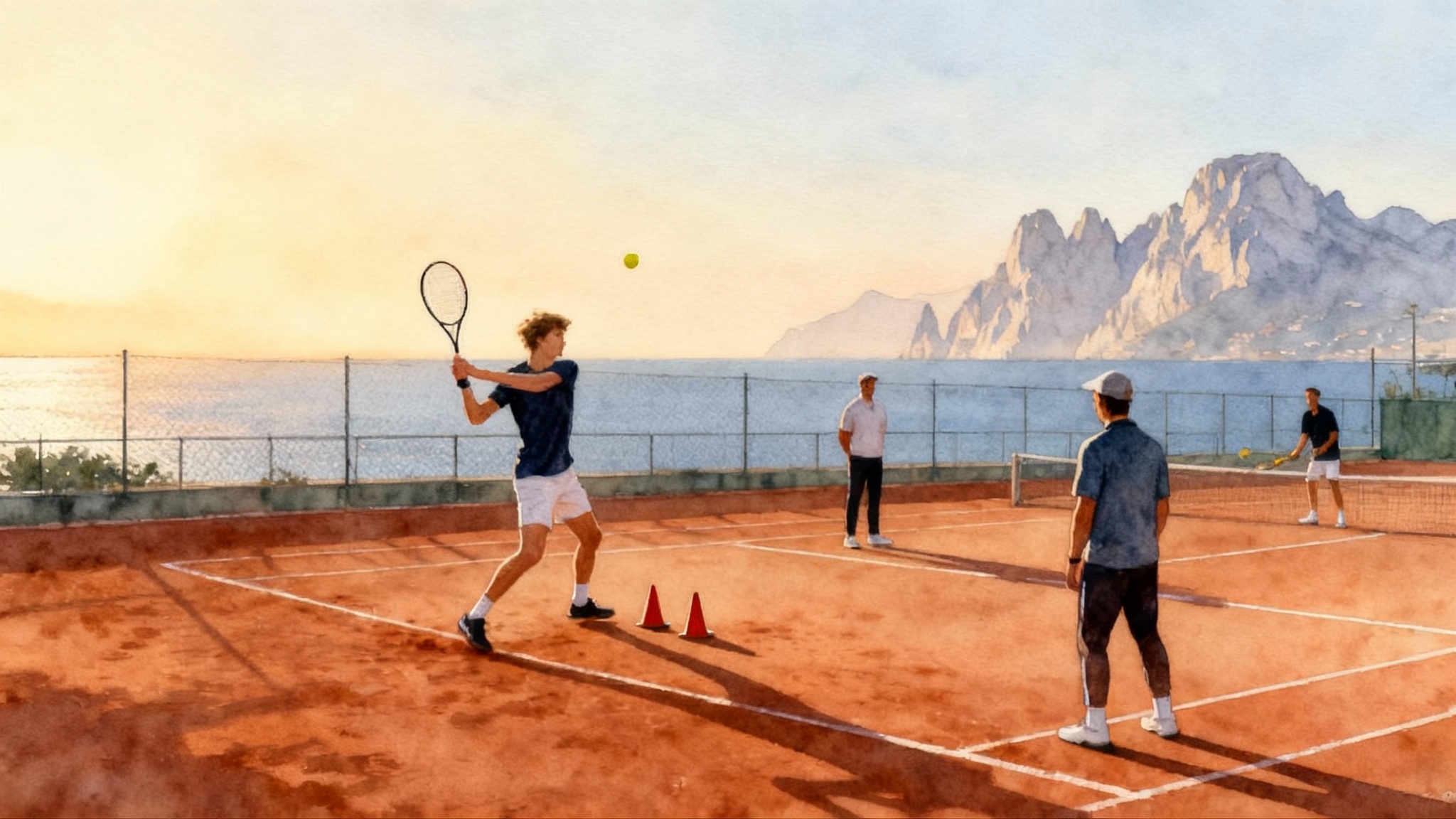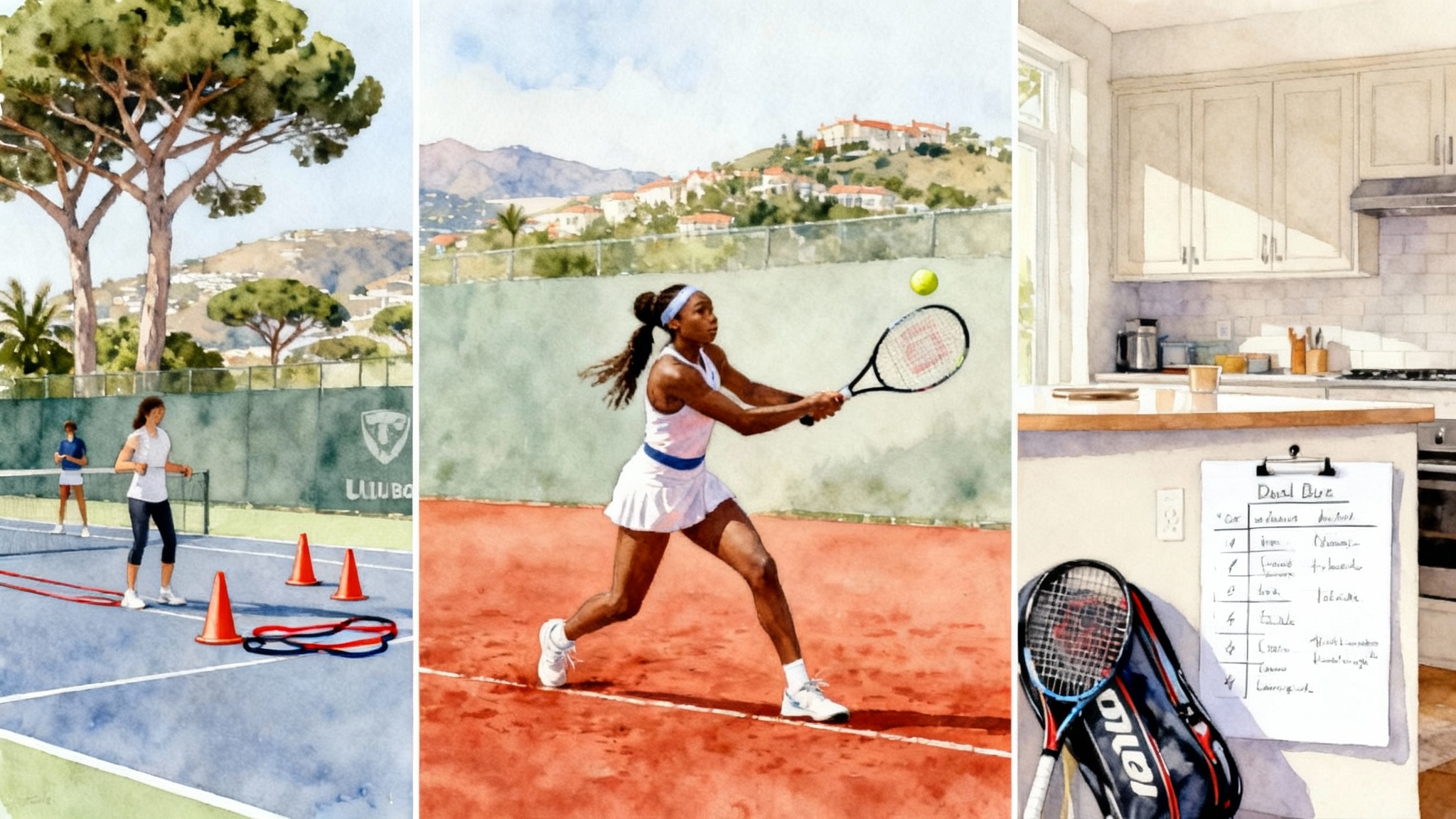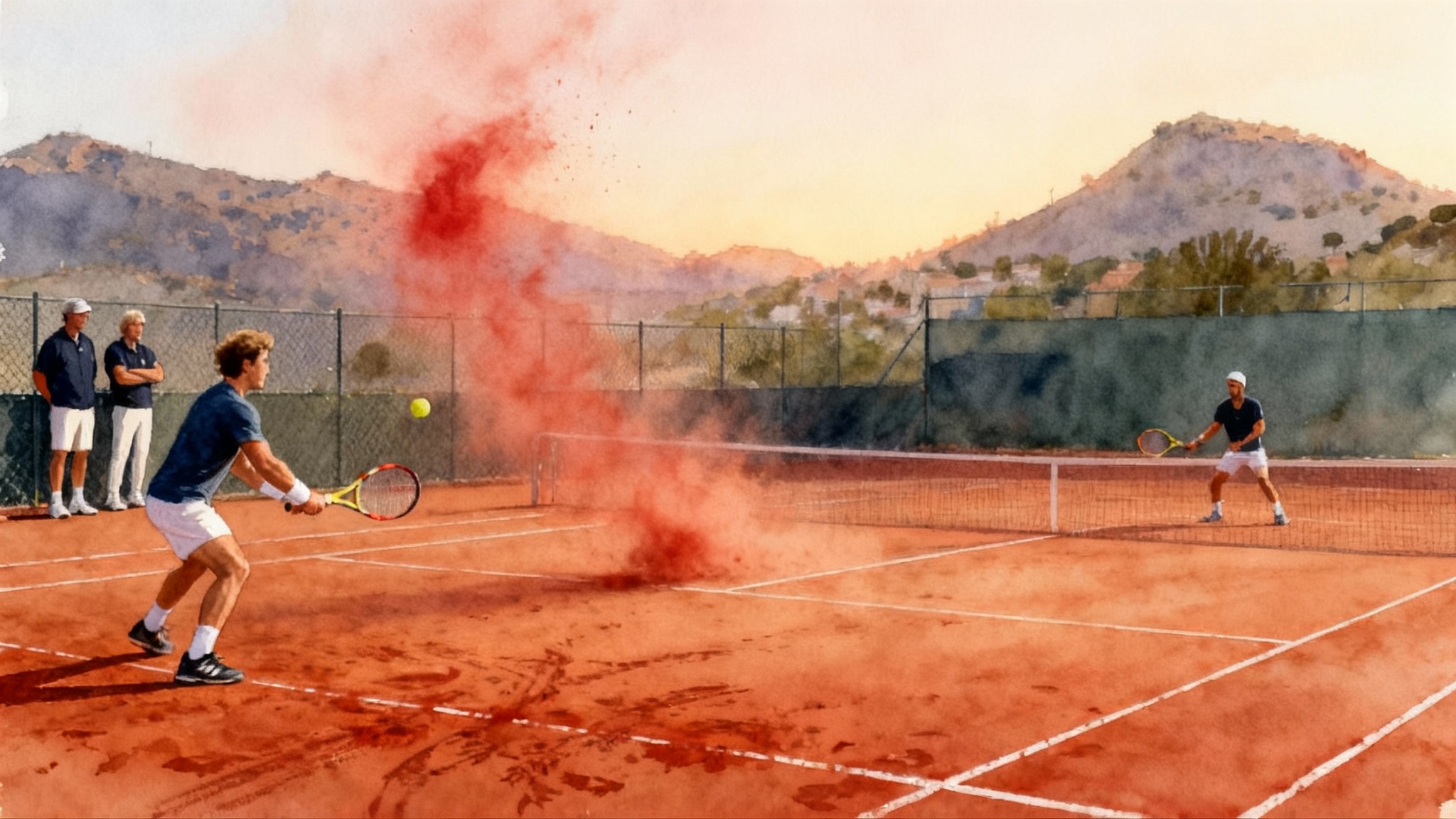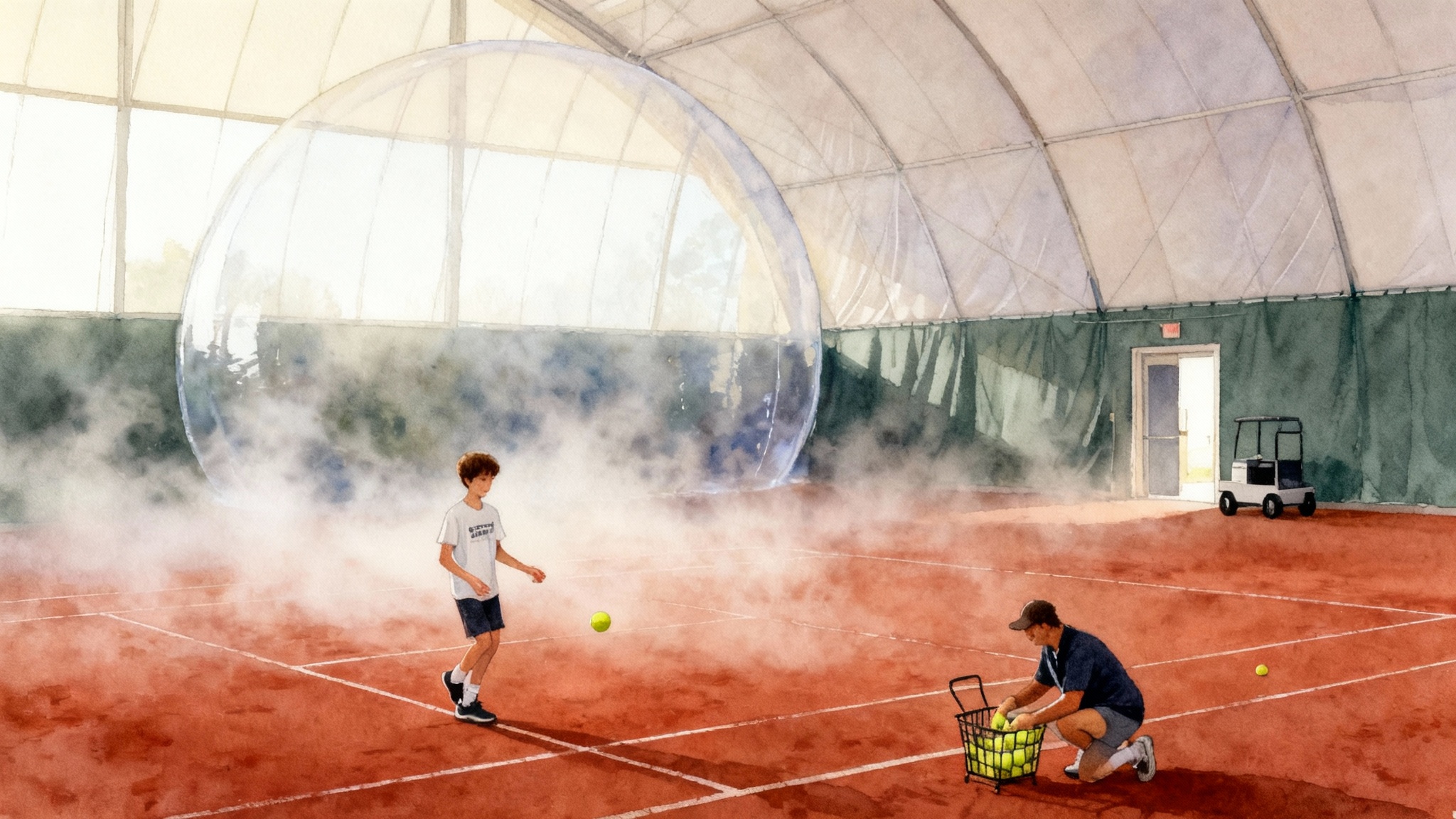From Bagni di Lucca to Tirrenia: Jasmine Paolini’s 2024–25 Rise
A small Tuscan club, a national training center by the sea, and a decade of deliberate choices. How clay‑heavy reps, footwork‑first habits, and a long coach partnership turned Jasmine Paolini into a late‑blooming force in 2024–25.
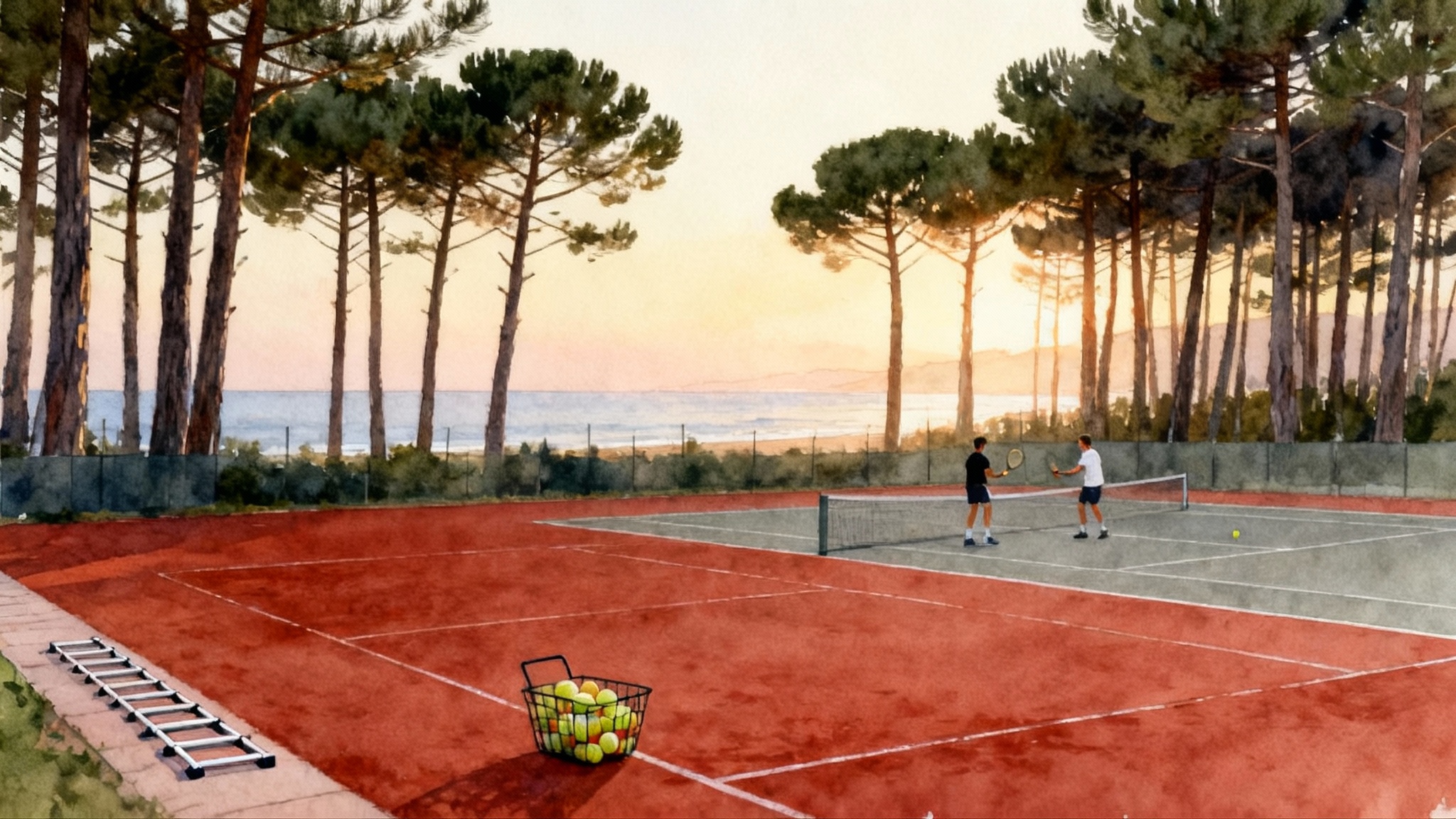
A Tuscan origin story, built one ball at a time
Before the stadium roars and prime-time slots, Jasmine Paolini learned the game at a modest riverside club in Bagni di Lucca. Picture a few courts, a handful of regulars, and a junior who stayed out longer than the lights should allow. That setting shaped two things that still define her tennis: repetition and joy. At fifteen, she and her family chose Italy’s federation pathway by moving her training base to the National Center in Tirrenia, a shift that delivered structure, sparring, and a clear route through junior and pro calendars. Families exploring Italy’s clay scene can also study our profile of Tennis Club Parma to see how strong club ecosystems feed national pathways.
Results that made the world notice
By the end of 2024, Paolini had done what many pegged as unlikely for a five-foot-four counterpuncher. She rose to the cusp of the sport, reached championship weekend at Roland Garros and Wimbledon, and captured a marquee title in Dubai. The doubles court became a second classroom too: with Sara Errani she stood on the Olympic podium in Paris, lost the Roland Garros doubles final that June, then returned to lift the French Open doubles trophy in June 2025. For a contrasting Italian development arc at an elite private academy, see how Piatti Academy forged Sinner.
What Tirrenia actually provides
Tirrenia is not a slogan. It is a coastal training campus near Pisa, inside a pine forest, with multiple surfaces, on‑site fitness and medical support, and ready access to national coaches and sparring. The facility includes both clay and hard courts, which matters when you are trying to make a clay‑bred game travel to grass and acrylic. For specifics on court mix and infrastructure, review the overview of the Tirrenia tennis facilities.
Parents often ask what a national center can offer that a private academy cannot. Tirrenia’s differentiator is integration. Surfaces, scheduling, physio, fitness testing, and tournament coordination sit under one roof, with coaches who talk to each other daily. That ecosystem amplifies training decisions that would otherwise be isolated.
Clay-heavy reps that travel
Paolini’s strokes look fearless now because they were forged in long, purposeful rallies on clay. Clay does not let you fake your way through points. The ball comes back, and your technique gets audited. The way Tirrenia uses clay for volume is not about endless crosscourts without thought; it is about controlled patterns:
- Forehand shape to a deep crosscourt cone, then a flatter change down the line on command.
- Looping neutral balls three feet above the net tape to build height tolerance, then a short-angled finish when the opponent’s court position triggers it.
- Backhand redirect drills that force the outside foot to set, load, and release with clean hips, not just quick hands.
Why it matters: these reps build ball tolerance, contact-height variety, and spin control. When Paolini shifted to grass in July 2024, the foundation did not disappear. She shortened her steps and took the ball earlier, but the decision tree and the patterns stayed. The clay work created margin; the grass adjustments tilted time in her favor.
Footwork first, always
Paolini’s speed is obvious, but the foundation is not running fast; it is arriving balanced. Tirrenia’s coaches emphasize footwork as a skill, not a warm‑up. Think of footwork like the gearbox in a car. If the gears mesh cleanly, the engine’s power reaches the road. If they grind, the horsepower gets lost.
Practical examples from the Paolini playbook:
- Split-step rhythm on every opponent contact, with a micro‑pause on heavy serves to avoid jumping early.
- Two‑step recovery rule after any change‑of‑direction ball, so she does not admire her shot and leak court.
- Crossover recoveries on deep diagonals, never a shuffle, to avoid being late on the next ball.
- Short hop into neutral stance on low, skidding grass balls, so the racquet path stays through the ball and not up it.
The result is simple to see but complex to build: she looks like she has more time than her opponents.
The power of a long coach partnership
Before 2025, Paolini spent a decade working with Renzo Furlan. That length matters. A long runway lets a coach and player iterate on the same foundation without tearing it down every off‑season. Furlan’s influence shows up in her point discipline, her willingness to trust high‑percentage patterns under stress, and her belief that big matches are won with many small, boring choices. The partnership ended in early 2025, as reported in Paolini ends decade with coach Renzo Furlan.
What can parents take from this? Stability beats novelty. If your child is changing coaches every quarter, ask whether the problem is the plan or the patience.
Doubles as a finishing school for singles
Errani and Paolini were not just chasing trophies together. Doubles forced them to practice what singles often hides.
- Returns must be directed, not just hard. Learning where to put the first ball against a serve‑and‑volley pair is a career‑long skill.
- Net play teaches pre‑contact reading. Poaching is really a lesson in opponent body language and contact height.
- Serve choices get sharper. To the body to jam the forehand. Wide on the deuce court to pull the returner into the backhand volley lane. T‑serve on break points to take away angles.
Those skills transfer directly to singles tiebreaks and return games against big servers. The medals and titles are proof, but the deeper value is how doubles tightened the screws on Paolini’s decision‑making.
Smart scheduling and energy management
Parents look at draws and see opponents. Pros look at calendars and see windows. Paolini’s team respected three rules in 2024–25:
- Build momentum, then protect it. Big wins were followed by measured scheduling to consolidate level, not a scramble to add events.
- Pair surfaces with goals. More clay in spring to fortify patterns; hard courts in late summer and fall to stress the first‑strike phase of the point.
- Use doubles to keep match sharpness without the same physical toll as back‑to‑back three‑hour singles.
National center or private academy? A decision tree for families
There is no universal right choice. There are patterns that increase the odds of progress.
Choose a national center pathway if:
- You want integrated support. Strength and conditioning, physio, sports medicine, and nutrition live next door to the courts. Coordination beats outsourcing.
- You need multi‑surface access. Your junior should see clay and hard every week, not every few months.
- Your child thrives in squads. If they train better with peers and sparring partners at their level, a center can create competitive friction daily.
Choose a private academy if:
- You need a tailored rhythm. Some players learn best with a high coach‑to‑athlete ratio and fewer voices.
- You will be on the road often. A tight coach‑parent unit can move faster on travel decisions than a federation bureaucracy.
- You have a special constraint. Schooling, language, or medical needs may favor a bespoke setup.
For more comparisons, study how USTA Boca built Coco Gauff to see how a federation‑linked ecosystem can work alongside private coaching.
Questions to ask any program, inspired by Paolini’s climb:
- How many quality balls per hour will my child hit, and on what surfaces? Show me a sample session plan.
- What footwork curriculum do you teach across the year? When does it progress from ladders and lines to live‑ball movement under stress?
- How will doubles be used to develop return and net skills? Show me drills that connect to singles patterns.
- How will you periodize the year? Where are the build blocks, the performance blocks, and the deload weeks?
- Who is accountable for scheduling decisions, and how often do we review them?
A one‑week template parents can adapt
This is not a magic recipe. It is a simple framework that mirrors the principles behind Paolini’s rise.
-
Monday
- Morning: Clay volume session, 90 minutes. Forehand shape crosscourt, down‑the‑line change on a whistle. Backhand redirect patterning.
- Afternoon: Strength session, 60 minutes. Lower body emphasis, single‑leg strength and deceleration.
-
Tuesday
- Morning: Live‑ball footwork. Serve plus one, recover two steps, defend the line. Add crossover recoveries and short‑hop neutral stances.
- Afternoon: Doubles drills. Deuce‑court returns body and T; poach reads off toss and contact height.
-
Wednesday
- Morning: Hard‑court first‑strike day. Serve targets, forehand inside‑out pattern. Shorter points, score live sets.
- Afternoon: Mobility, breath work, and video review.
-
Thursday
- Morning: Clay tolerance day. Three‑ball patterns aiming three feet above the tape, then finish short angle on coach call.
- Afternoon: Mixed sets, singles and doubles tiebreaks.
-
Friday
- Morning: Match play singles, two sets. Focus on return height and depth.
- Afternoon: Gym maintenance, shoulder care, hips and thoracic mobility.
-
Saturday
- Morning: Optional doubles event or practice set to keep timing.
- Afternoon: Light hit or complete rest.
-
Sunday
- Rest and planning. Review last week’s notes. Set two technical goals for the next week.
What this story really says about development
Jasmine Paolini’s 2024–25 rise did not come from one brilliant tweak. It came from a chain of smart choices that compounded over time: a federation pathway that supplied infrastructure, clay‑heavy repetition that built transferable skills, a footwork‑first mindset that created balance under pressure, a long coach relationship that gave stability, and a doubles program that refined decisions in the busiest parts of the court. The singles finals, ranking jump, and doubles medals are the visible outcomes. The inputs were simple and repeated.
For parents deciding between a national center and a private academy, the takeaway is practical. Identify the environment that will deliver the right repetitions, on the right surfaces, with the right feedback loops, for your child’s next two years. Then commit. Adjust the details as you learn, but keep the core principles steady.
